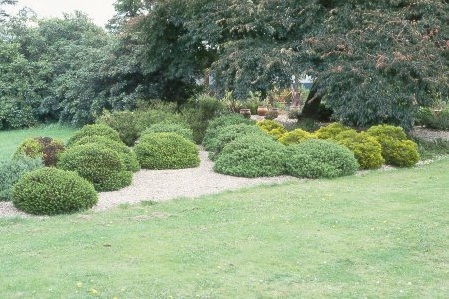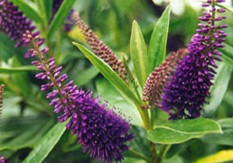Categories
Calendars
Guides
Reviews
Archive
Gallery
Articles
Ask Our Gardening Expert
Hebes
Hebes are another remarkable shrub originating in New Zealand and perhaps the most widely grown plant from that country. In their homeland they are found in mountain country, in the subalpine zone above the treeline. There are over eighty species as well as its cultivars and hybrids. Their variation in habit, foliage and flowers make them an interesting garden subject and reason for their popularity. Hebes can form dwarf, prostrate or large shrubs and are shown to good effect in group plantings in rock gardens or background plantings. They have even been clipped into low hedges. They are easily grown and adapt well to a variety of growing conditions other than waterlogged soil, though they do best in well drained soil and a sunny position. They can suffer from mildew and black spot in very dry climates.

A collection of Hebe species
There are too many to provide an exhaustive list. Hebe speciosa forms the largest flowers and the hardiest are the whipcord varieties. H. albicans is a spreading bush with green grey leaves and short, white flowers. H x andersoni is variegated, with creamy white edged leaves and long flower spikes.

Hebe speciosa
Hebes need little care, perhaps a light pruning after flowering to encourage a bushy habit and limit growth. Some varieties are not long-lived but they are easy to propagate from semi-ripe tip and heel cuttings.